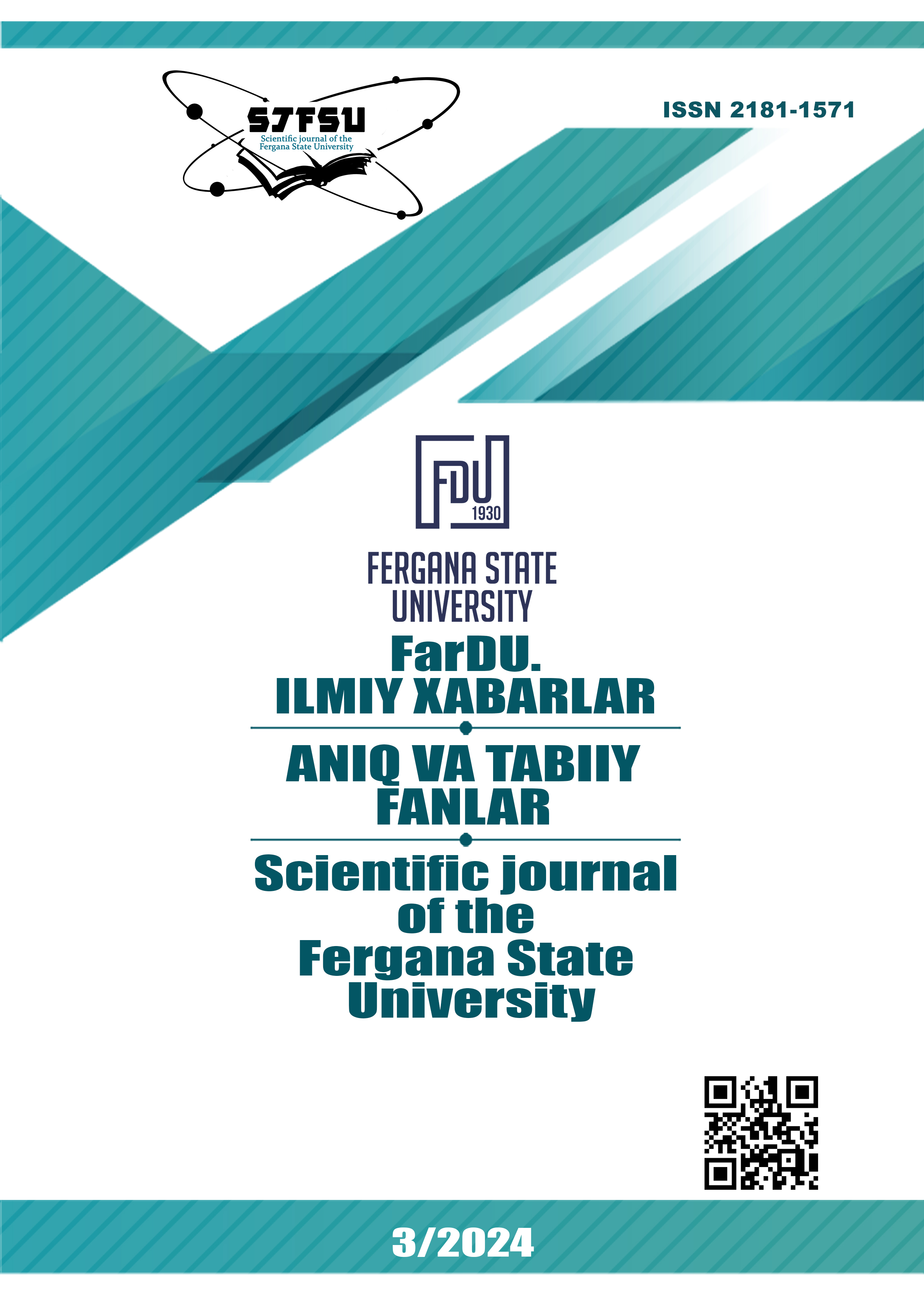SOME BIOLOGICAL FEATURES AND HARM OF THE PEA BEETLE (BRUCHAS PISORUM S.) IN THE CONDITIONS OF THE FERGANA VALLEY.
Keywords:
legumes, grain, worm, pupa. beetle, pea, pollinator.Abstract
The article presents an analysis of scientific works on the pest of pea plants grown in the Fergana Valley. As a result of the observations, it can be noted that the pea plant is damaged by the pea beetle - Bruchus pisorum L. Because among pests of leguminous crops this is one of the most common types of pests. Beetle larvae are univoltine larvae that feed only on pea plants. A common feature of beetles is their sensitivity to external air temperature, including at high air temperatures the beetles are active, and at low air temperatures they hide among flowers or young leaves.General entomological rules were used in the work. When analyzing, a distinctive feature of beetles from other species can be distinguished by the fact that their hard wings do not cover the body from the top to the end. In addition, the white border on the body of the beetle clearly distinguishes the species from other granivores. Like all pest beetles, these beetles do little damage to the plant during the ripening period. Pests are transmitted in the larval stage. If a plant produces pods for a long time on fertile soil, pests develop that damage the milk pods over a long period of time. Therefore, such peas retain their germination capacity. Insect larvae also develop according to age, with changes in body color. Over time, invisible spots in the form of black dots form on damaged pods. Damaged pods become contaminated with larval excrement, resulting in low-quality products unsuitable for human consumption.
References
S. Ahmadjanova, & H. Rayimberdiyeva. (2021). POTATOES OF THE CROP CONFOUNDED PESTS. Web of Scientist: International Scientific Research Journal, 2(12), 270–276.
Ахмаджонова С.Ш., Каюмова О.И. (2021) //К вопросу об экологии Туркестанского щелкуна (Coleoptera, Elateridae) Ферганской долины// Вестник Хорезмской академии Маъмуна. 2021-10. 48-54 стр.
Ахмаджонова, С. Ш., & Каюмова, О. И. (2021). Использование технологии проблемного обучения в преподавании биологии. Общество и инновации, 2(4/S), 42-45.
Ахмаджонова, С. Ш., & Каюмова, О. И. (2021). Биология фанини ўқитишда муаммоли таълим технологиясидан фойдаланиш. Общество иинновации, 2(4/S), 42-45.
Ахмаджонова, С и Рахимова, Д. 2020. К экологии щелкунов (coleoptera, elateridae) Ферганской долины. Общество и инновации. 1, 2/S (дек. 2020), 319–322.
Ахмаджонова, С. Ш., Хамзаев, Р. А., & Халимов, Ф. З. (2019). Трофические связи Agriotes meticulosus (Coleoptera: Elateridae) в естественных и искусственных биоценозах. Бюллетень науки и практики, 5(7), 20-27.
Ahmadjonova Sadoqathon Shokirovna. (2023). OLENKA YOKI TUKLI CHIPOR QO`NG`IZINING AYRIM BIOLOGIК HUSUSIYATLARI. Journal of Integrated Education and Research, 2(5), 45–50.
Ахмедов М.Х., Aхмаджонова С.Ш. К экологии щелкунов (Coleoptera, Elateridae) Ферганской долины-2011-№2,-Аспирант и соискатель,147-154стр.
Ҳабибуллаев Ф. Н.,Ахмаджонова С. Ш Особенности распределения проволочников по вертикальным зонам в естественных и культурных биоценозах Ферганской долины. Vol. 1 No. 1 (2022): BEST SCIENTIFIC RESEARCH – 2022
А.М Девяткин, А.И. Белый, А.С. Замотайлов. Сельскохозяйственная энтомология. Электронный курс лекций /.–Краснодар, 2012.–301с.
Kimsànbayev H.X., Ergashev S.F. O‘lmàsboyevà., R.Sh., Sulaymonov B.A. ENTOMOLOGIYA Àgronomiya và o‘simliklàrni himoya qilish kollejlari uchun o‘quv qo‘llànmà „O‘qituvchi“ nashriyot- matbaa ijodiy uyi. Toshkent – 2006.
Яхонтов. В.В, Екология насекомых. 2-изд., M., 1969.
Downloads
Published
Issue
Section
License
Copyright (c) 2024 Scientific journal of the Fergana State University

This work is licensed under a Creative Commons Attribution-NonCommercial-NoDerivatives 4.0 International License.
How to Cite
Most read articles by the same author(s)
- , , , DETERMINATION OF FABRICS COLOR FASTNESS, SWEAT RESISTANCE AND COLOR FADING RESISTANCE , Scientific journal of the Fergana State University: No. 3 (2024): FarDU.Ilmiy xabarlar jurnali. Ilova to'plam (Aniq va tabiiy fanlar)
- , BIOLOGICAL FEATURES OF SOME FAMILIES OF SPIDERS THAT DO NOT SPIN WEBS , Scientific journal of the Fergana State University: No. 3 (2024): FarDU.Ilmiy xabarlar jurnali. Ilova to'plam (Aniq va tabiiy fanlar)
- , , , DETERMINATION OF FABRICS COLOR FASTNESS, SWEAT RESISTANCE AND COLOR FADING RESISTANCE , Scientific journal of the Fergana State University: No. 3 (2024): FarDU.Ilmiy xabarlar jurnali. Ilova to'plam (Aniq va tabiiy fanlar)
- , , SYSTEMATIC ANALYSIS AND LIST OF SPIDER SPECIES DISTRIBUTED IN CENTRAL FERGANA AREA , Scientific journal of the Fergana State University: No. 3 (2024): FarDU.Ilmiy xabarlar jurnali. Ilova to'plam (Aniq va tabiiy fanlar)
- , ASSESSMENT OF GEOECOLOGICAL STATUS AND CONSEQUENCES IN ANTHROPOGENIC LANDSCAPES OF THE SHAHIMARDONSOY RIVER BASIN , Scientific journal of the Fergana State University: No. 1 (2024): FarDU ilmiy xabarlar jurnali ilova to‘plam (GEOGRAFIYA)

